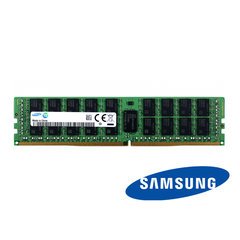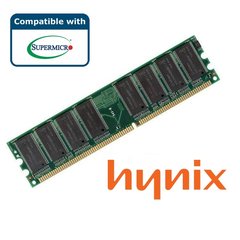Intel AEP 3DXP DCPMM128G DDR4-2666,HF,RoHS - NMA1XXD128GPSU
Capacity: 128 GB Memory speed: 2666MHz Type: DDR 4 Error Correction Code (ECC): ECC
Interested in purchasing more units? Request an individual B2B offer for these products.
| Product code | 210.157083 |
|---|---|
| Part number | NMA1XXD128GPSU |
| Supermicro Part No. | MEM-IAEP-NMA1XXD128GPSU |
| Manufacturer | Intel |
| Availability |
In stock 0 pc
Stock allocation and delivery options
Transport company across Europe Thursday 28. 11. at the latest Wednesday 4. 12. |
| Supplier availability | In stock 10 pc |
| Warranty | 24 months |
| Weight | 0.03 kg |
| The price includes all legal fees | |
Detailed information
Computer memory
Memories (RAM) are essential for the server to operate and they are often key in terms of its performance. Important parameters are mainly capacity, frequency and response speed, which determine the number of tasks that the server is able to serve.
Guaranteed quality
Server memory can have considerably higher capacity compared to conventional computers as well as ECC technology for automatic bit error correction, thus achieving significantly higher reliability.
Compatibility
When choosing RAM, it is always advisable to verify the “compatible list” of the motherboard for which the RAM is intended. Our sales team will be happy to lend you a helping hand when choosing. In some cases, even officially untested memory may work, but over time there may be errors in writing and reading, exposing servers in particular to unacceptable risk.
RDIMM
Frequency
The frequency given in MHz indicates how many operations the memory module performs in one second. As a rule, the higher the frequency of the computer memory, the faster the memory processes instructions.
In the case of DDR4 memories, we normally encounter frequencies of 2,133 to 4,600 MHz, for the latest DDR5 technology we encounter frequencies of 4,800 to 6,400MHz.
2666 MHz
Non-ECC
Memory modules that do not use ECC technology are not able to detect and remove bit errors.
DDR4
It is the direct successor of DDR3, which outperforms its predecessors with its speed. The main advantages of DDR4 are higher module density and lower voltage requirements (about 40% more economical compared to DDR3), along with a higher data transfer rate and the highest prevalence within the server world.
Parameters
| Memory generation | DDR 4 |
|---|---|
| Form Factor | DIMM |
| Size in GB | 128 |
| Memory type | DIMM |
| Base Frequency | 3200 MHz |
















